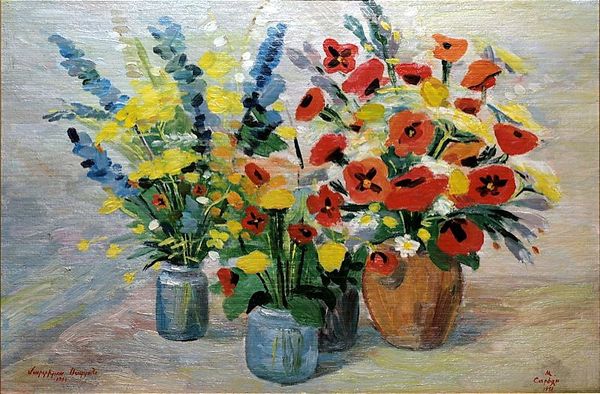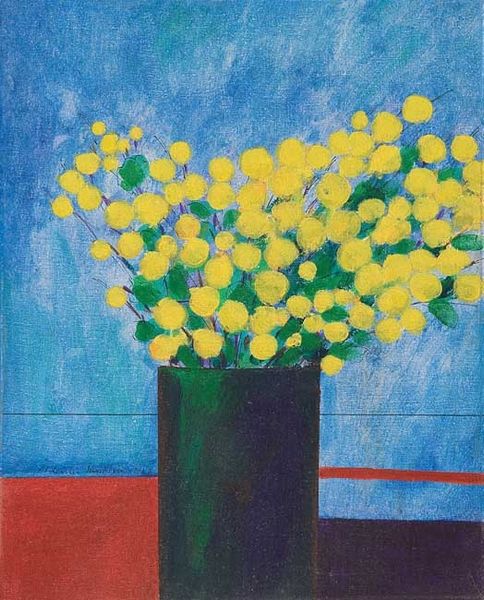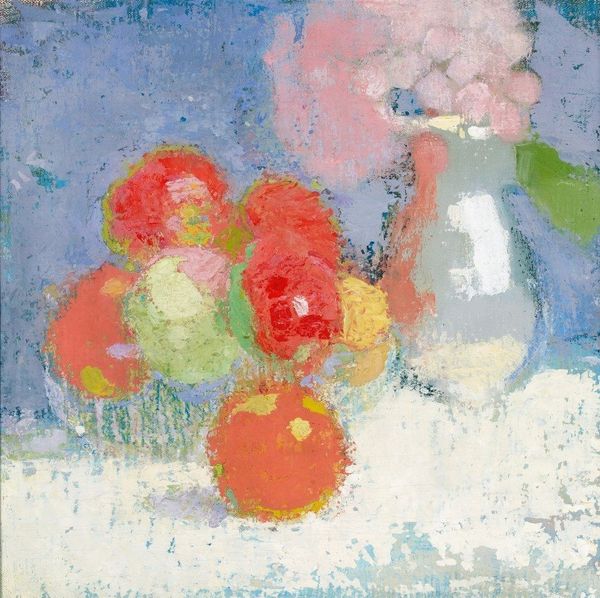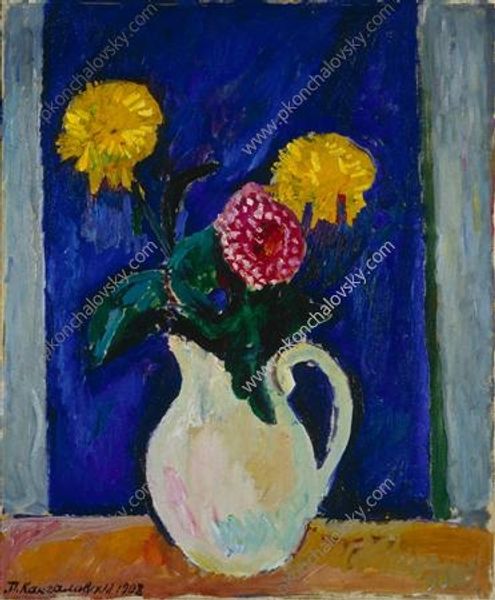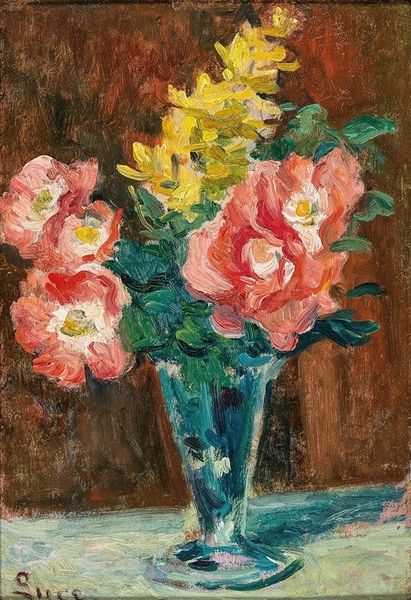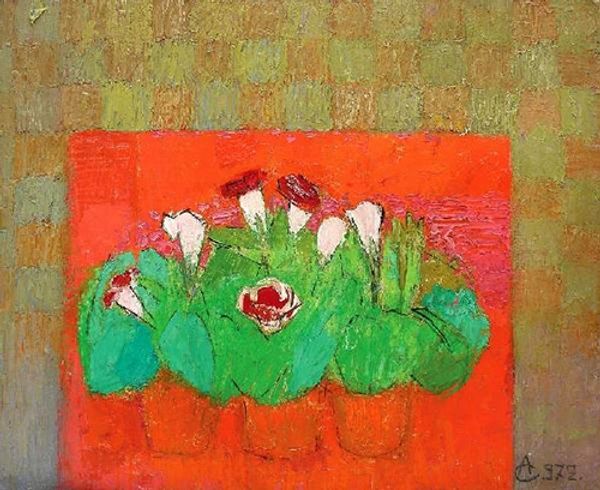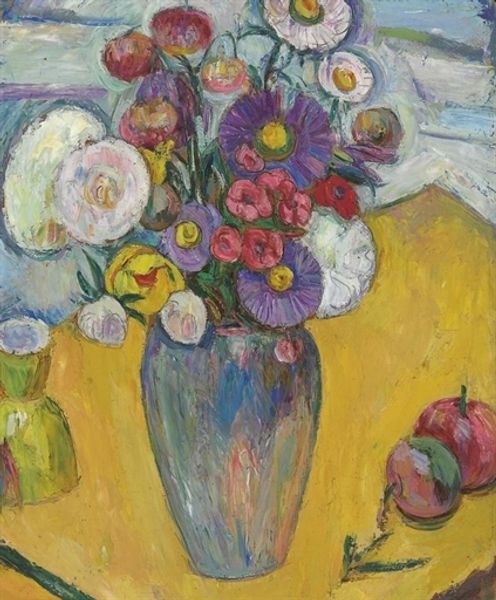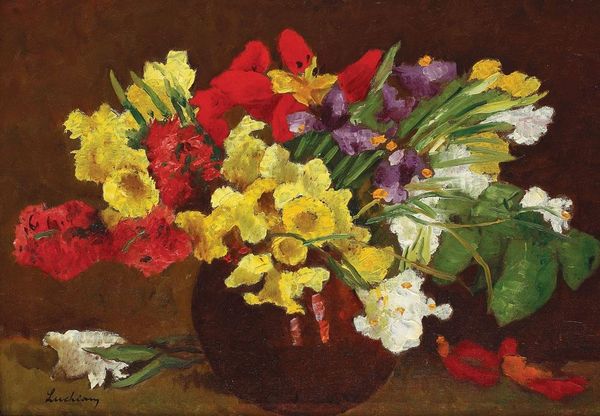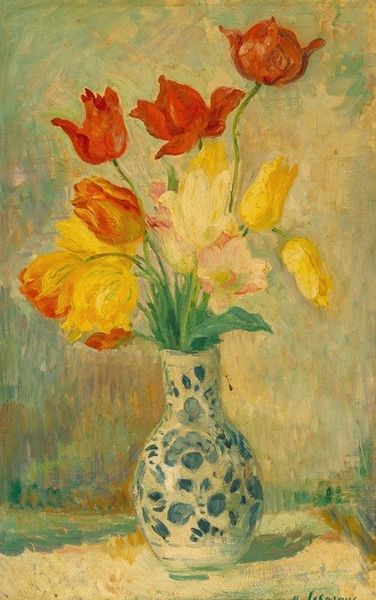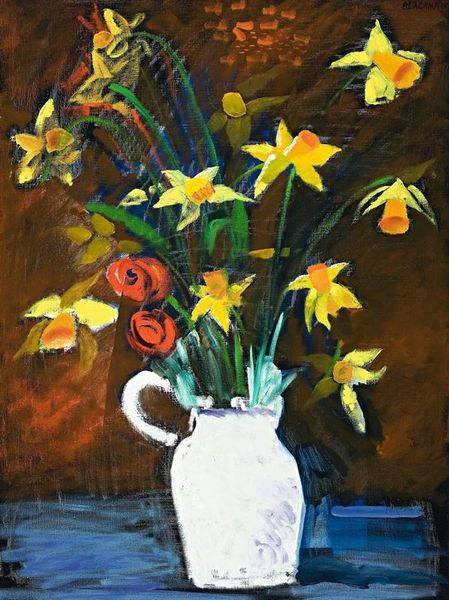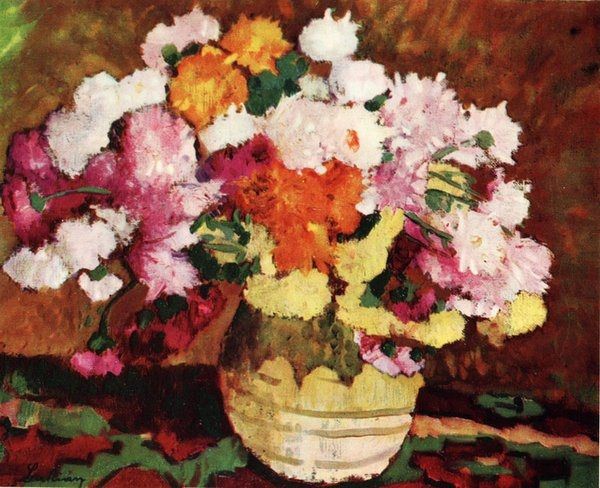
Copyright: Cuno Amiet,Fair Use
Editor: So here we have Cuno Amiet's "Bouquet of Tulips" from 1960, done in oil paint. The brushstrokes seem really thick, and there's a certain energy in the way the colors pop, red against yellow. What strikes you about this piece? Curator: The flowers, tulips to be exact, immediately signal themes of fleeting beauty and transience. But it is more than that: during the 17th-century, the "Tulip Mania", it has also represented a history of commodification, global trade, and speculative bubbles. We need to think about Amiet painting this in 1960. After two world wars, what did such themes signify in that period? A symbol of luxury? Recovery? Loss? How does its historical baggage change how we view its simple presentation today? Editor: I hadn’t thought about the symbolism of tulips themselves, but the economic context is fascinating. How much do you think Amiet was actively engaging with those ideas? Curator: Whether he consciously intended it or not is secondary. An artist is a product of their environment. This, to me, is also part of the work. Do you see a potential critique of capitalism reflected in this painting, knowing when it was created and the tulip’s earlier symbolism? Or something else entirely? Editor: I see it as a quiet resistance— finding beauty and simplicity, especially in nature, against a backdrop of immense societal pressure and complex themes. Curator: Exactly. And in that resistance lies power. Hopefully we now see how the piece creates a rich tapestry woven with many elements! Editor: This piece opened a wider perspective on something I would have dismissed at first glance. Thank you for taking me deeper!
Comments
No comments
Be the first to comment and join the conversation on the ultimate creative platform.

